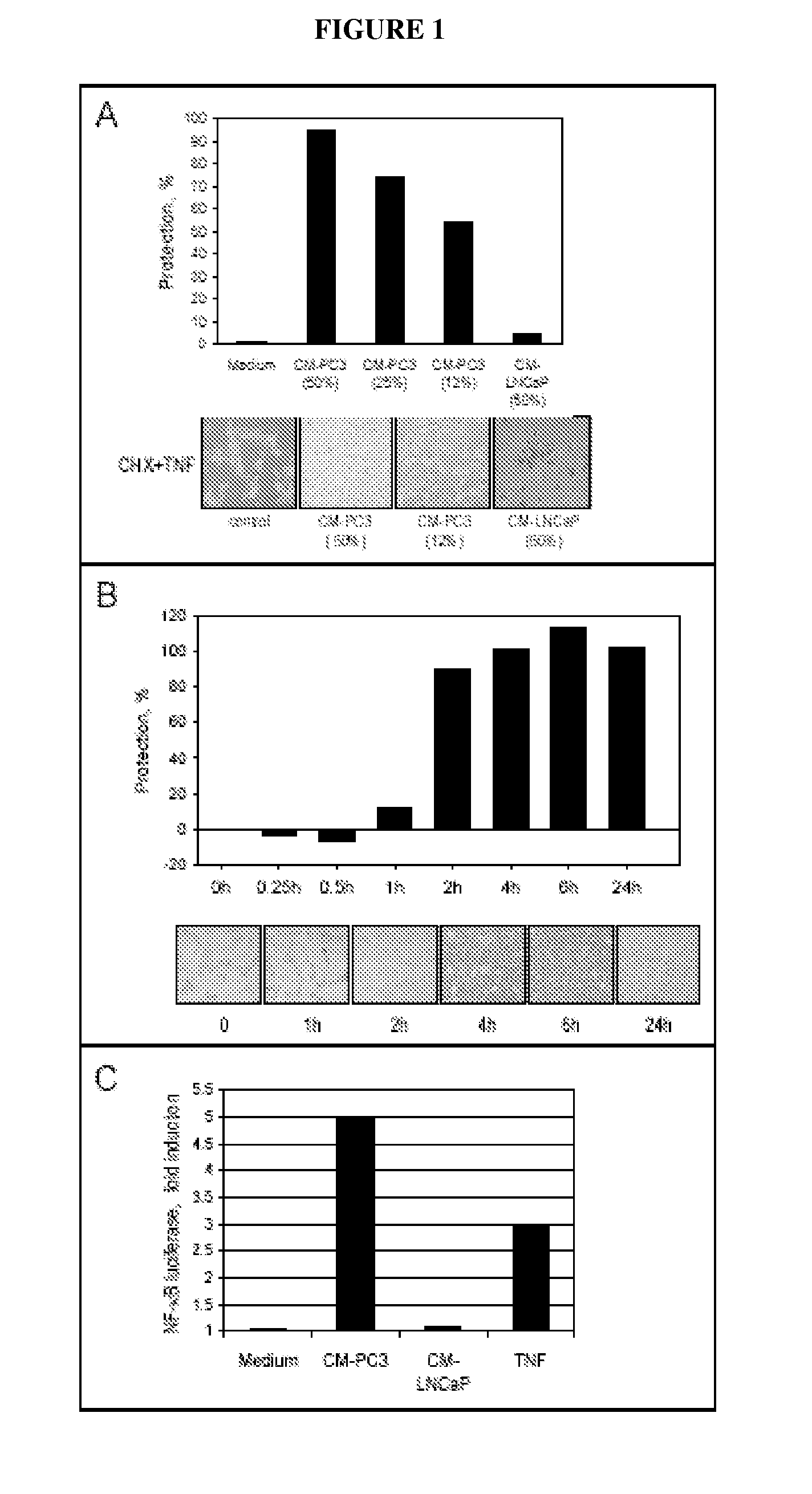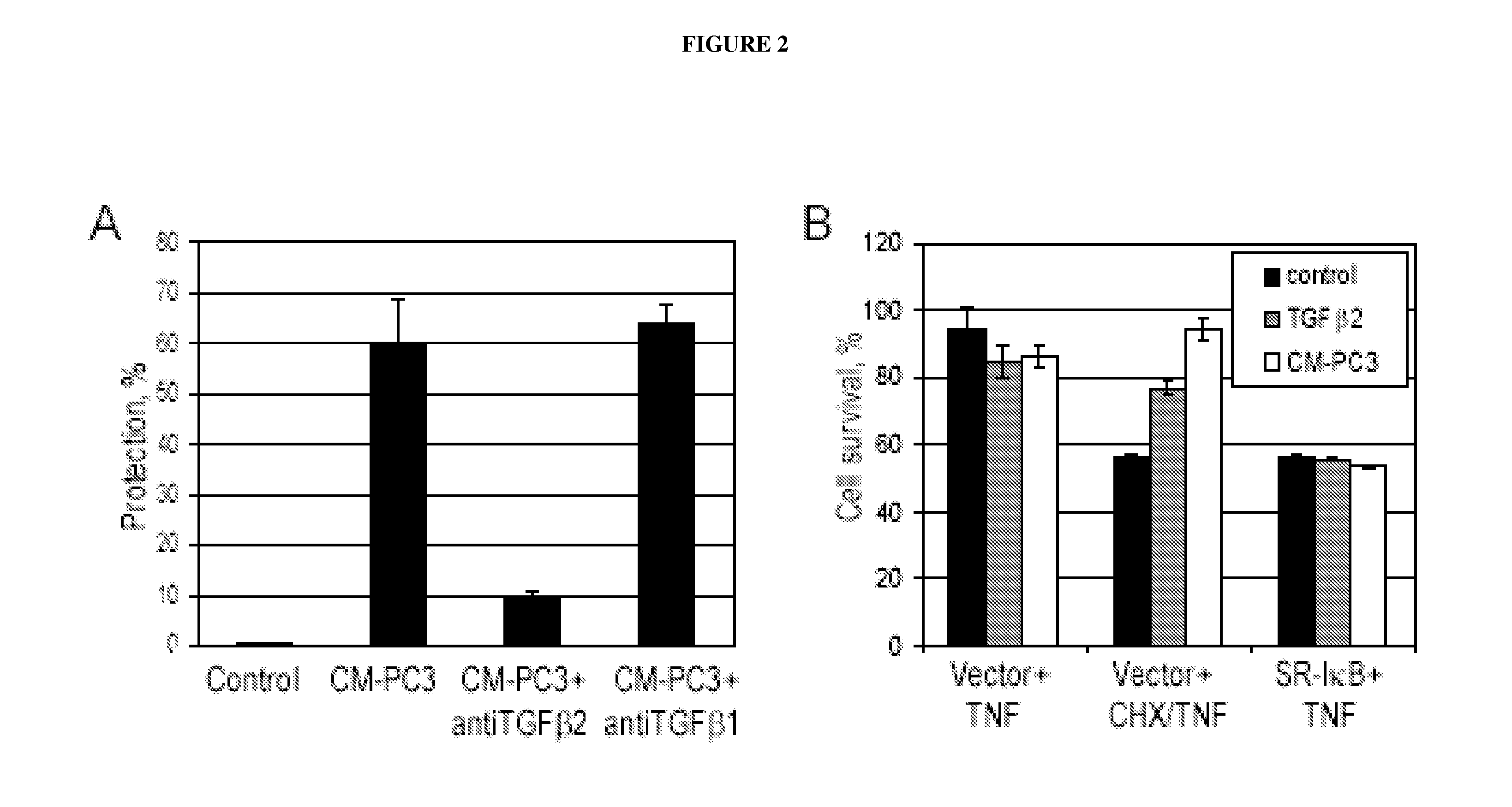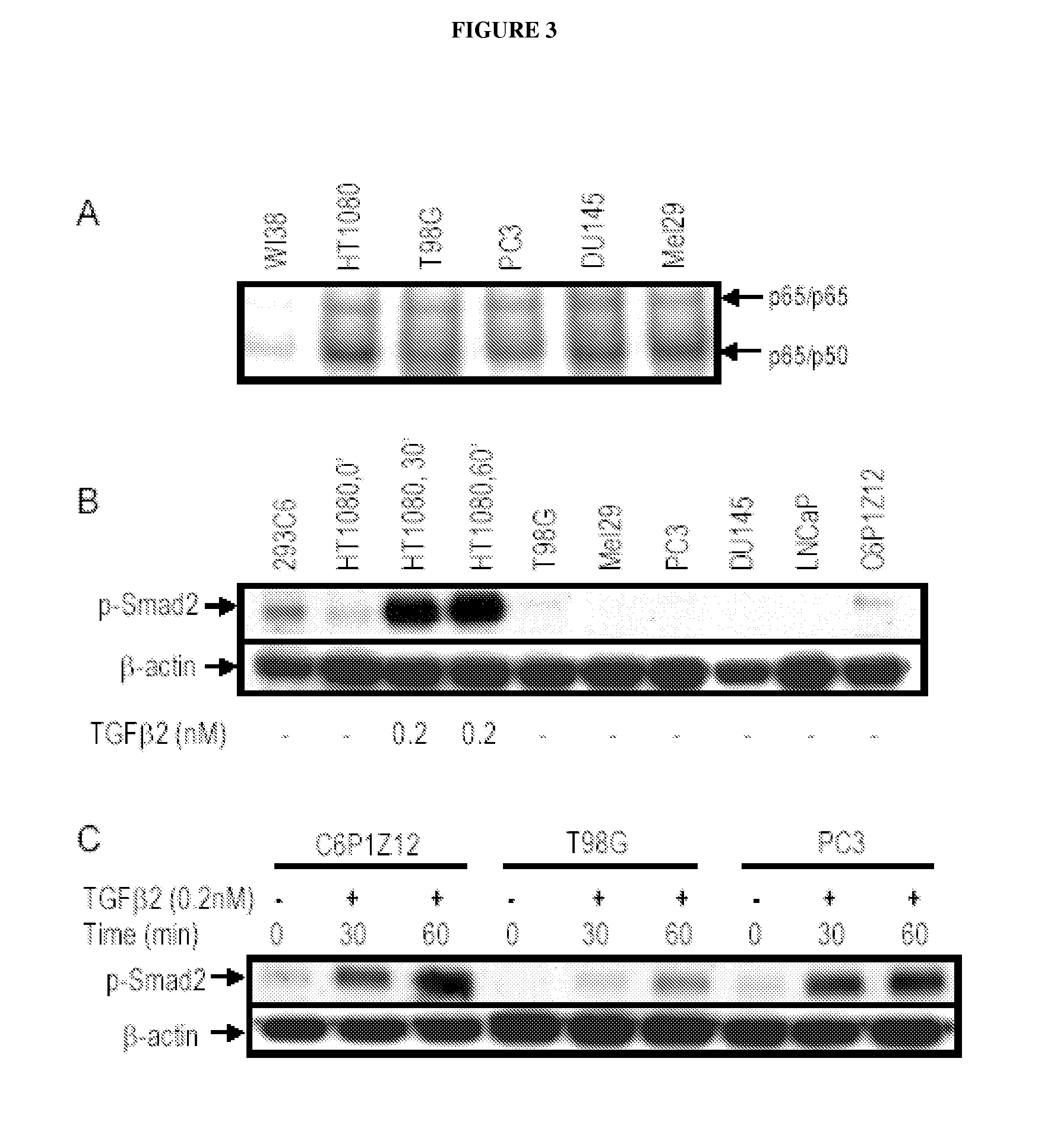TGFBeta
a technology of tgf and tgfbeta, which is applied in the field of tgf, can solve the problems of complex natural sensitivity of such tissues, risky normal rapid dividing or apoptosis-prone tissues, and well-known side effects, and achieve the effect of reducing the rate of conversion of latent tg
- Summary
- Abstract
- Description
- Claims
- Application Information
AI Technical Summary
Benefits of technology
Problems solved by technology
Method used
Image
Examples
example 1
TNF-Resistant Prostate Cancer Cells Protect TNF-Sensitive Cells From Apoptosis
[0132] The human prostate tumor cell lines PC3 and DU145 are consistently resistant to treatment with TNF, while mouse fibroblast Balb / c-3T3 indicator cells are highly sensitive to TNF in the presence of low levels of cyclohexamide (CHX) (Gasparian et al., 2002). Balb / c-3T3 cells were incubated overnight, separately, or together at a ratio of 5:1:: Balb / c-3T3 :PC3 in RPMI-1640 medium with 10% FCS, followed by the addition of CHX or a combination of CHX (0.4 μg / ml, Sigma, St. Louis, Mo.) and TNFα (0.2 ng / ml, PeproTech Inc., Rocky Hill, N.J.). As a control, Balb / c-3T3 cells were also incubated with the human prostate tumor cell line LNCaP, which are sensitive to TNF (Palayoor et al., 1999). Balb / c-3T3 cells cultivated with PC3 cells were protected from TNF-induced apoptosis, whereas LNCaP do not provide protection (data not shown).
example 2
Media Conditioned by TNF-Resistant Prostate Cancer Cells Protect TNF-Sensitive Cells from Apoptosis
[0133] To determine whether the resistance to TNF-induced apoptosis provided by PC3 cells in Example 1 was an intrinsic or transmissible trait, cell-free media conditioned by PC3 cells or LNCaP cells was tested for the ability to protect Balb / c-3T3 cells from TNF-induced apoptosis in the presence of CHX. To collect conditioned media, equal number of cells were cultivated to ˜90% confluency, the media was replaced, and the cells were incubated for another 24 h. Samples of conditioned media were filtered, aliquotted, and frozen at −70° C. for future use.
[0134] Conditioned medium from PC3 or LNCaP cells (50, 25 or 12.5%) was used to treat Balb / c-3T3 cells overnight before addition of TNF and CHX. Unconditioned medium was used as a control. Cells were counted by first washing with 1× phosphate buffered saline (PBS) followed by staining with methylene blue, solubilization with 30% HCl, an...
example 3
Media Conditioned by TNF-Resistant Prostate Cancer Cells Induce NF-κB
[0136] The TNF-resistance of PC3 and many other types of cells is mediated by the activity of NF-κB (Muenchen et al., 2000). The DNA-binding activity of NF-κB is constitutively high in the human prostate tumor cell lines PC3 and DU145, but not the human prostate tumor cell line LNCaP, (Gasparian et al., 2002; Palayoor et al., 1999). Therefore, we tested whether the culture media conditioned by PC3 cells in Example 1 was able to induce NF-κB activity in addition to protecting cells from apoptosis.
[0137] Balb / c-3T3 cells were transiently transfected with an NF-κB reporter construct. Efficiencies of transient transfection were normalized by determining β-galactosidase activity in cells co-transfected with a pCMVLacZ β-galactosidase reporter plasmid. Twenty-four hours after transfection, media conditioned by PC3 or LNCaP cells was added. Medium and TNFα were also individually added as negative and positive controls, ...
PUM
| Property | Measurement | Unit |
|---|---|---|
| molecular weights | aaaaa | aaaaa |
| molecular weights | aaaaa | aaaaa |
| molecular weights | aaaaa | aaaaa |
Abstract
Description
Claims
Application Information
 Login to View More
Login to View More - R&D
- Intellectual Property
- Life Sciences
- Materials
- Tech Scout
- Unparalleled Data Quality
- Higher Quality Content
- 60% Fewer Hallucinations
Browse by: Latest US Patents, China's latest patents, Technical Efficacy Thesaurus, Application Domain, Technology Topic, Popular Technical Reports.
© 2025 PatSnap. All rights reserved.Legal|Privacy policy|Modern Slavery Act Transparency Statement|Sitemap|About US| Contact US: help@patsnap.com



